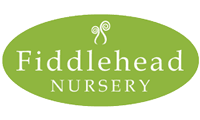What Exactly Is An Edible Landscape?
We endorse a gardening system known as forest gardening, wherein an edible landscape is designed to act like a natural ecosystem so as to reduce maintenance and work. The most common yield is food, but forest gardens can also provide products such as medicine, fibre, firewood, dye, building materials, and more.
Forest gardens incorporate trees, shrubs, ground-covers, vines, perennial vegetables and salad greens, all interplanted so as to minimize competition and maximize co-operation. They can be created on any scale, from a small backyard to a few acres; a large, mature forest garden can take ten to twenty years to create, though many crops will be available after the first year. It takes a lot of work to build any kind of garden, but forest gardens become easier with each passing year, because nearly all of the plants are perennial; they establish themselves and, eventually, thrive. The point of putting in all the work up front is that if it is designed properly, it will, over time, become a largely self-maintaining system that will give back huge yields each year..

